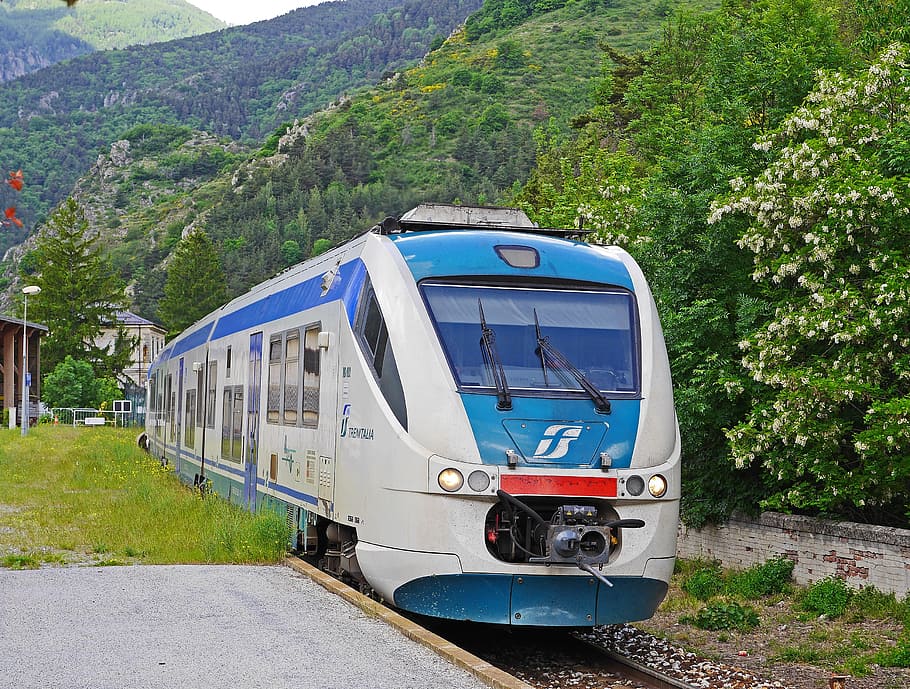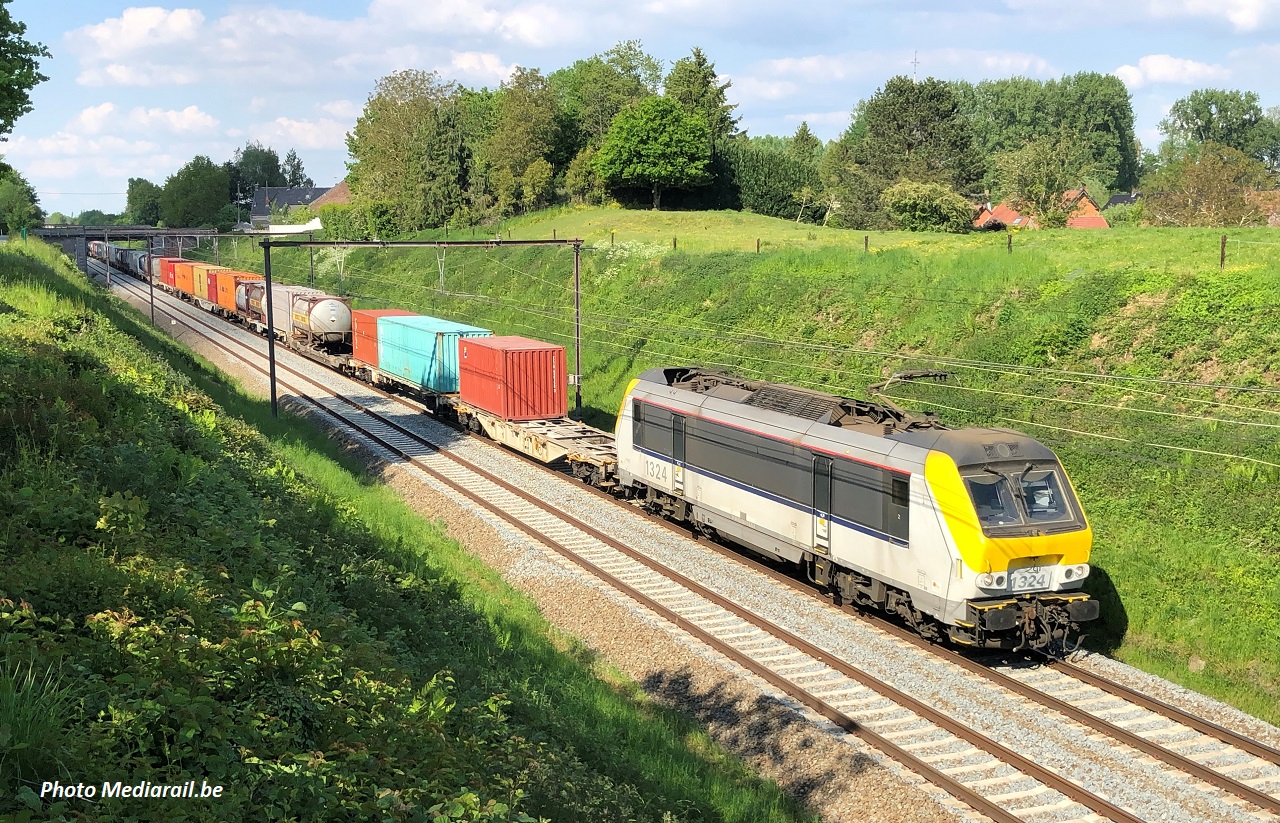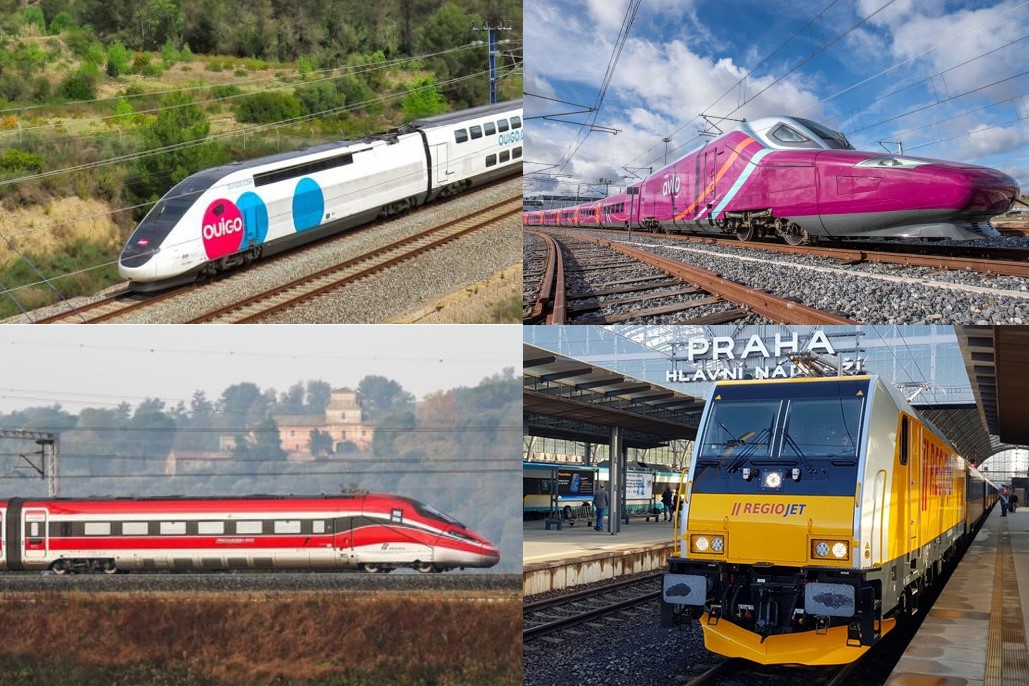(Above: 2019, Berlin – Photo Deutsche Bahn AG / Volker Emersleben)
05/04/2022 – By Frédéric de Kemmeter – Railway signalling and freelance copywriter – Suscribe my blog
(Version en français)
🟧 Back to homepage 🟧 See our brief news
A question that often comes up in the railway debate is why there is such a difference between the train service of the 1960s and 1970s and the current period. The answer is that since the 2000s the railway has entered the third era of its existence. But what exactly does this mean?
The railway has been around for more than 200 years. The year 1825 is generally remembered as the real start of the passenger railway, when on the 12.9 km from Stockton to Darlington, England, originally intended for coal, George Stephenson considered carrying passengers, which he did on 25 September 1825.
The years that followed were marked by the beginnings and rapid expansion of a transport network that was seen as revolutionary, undermining the stagecoach and the entire horse economy. The 19th century was characterised by a multiplicity of projects and extensions to the network, which reached its peak in almost all European countries between 1900 and 1920. At that time, many countries had state railways, private companies and an extensive secondary network, sometimes with metre gauge.
This first era of the railway actually corresponds to the first industrial revolution. The railways, then the dominant form of transport, really served the « needs of the nation », both in terms of serving industrial power and transporting people and armies. We can see how much this has changed today…
The second era
It is expressed above all by the very different environment in which the railway has lived since the end of the Second World War:
- Rail is no longer the dominant transport mode;
- A major drop of the secondary network began with the nationalisations;
- It was believed that the best assets of rail were more in mainline traffic and freight;
- A contradiction was established on a long-term basis with, on the one hand, the State’s interventionism concerning fares and, on the other hand, pressing demands to return to financial balance;
- Finally, and not insignificantly, the orientation of public policies is increasingly focused on controlling public finances.
While the railways have held a virtual monopoly on transport since the 1820s, from 1945-50 onwards there was a decline in rail activity in favour of road transport. Road transport became the dominant mode of transport and the large industries and coalmines closed down one after the other. The new factories were more modern, smaller and did not produce enough to fill a train every night, or sometimes even a complete wagon.
The post-war reconstruction was built on the criteria of the second industrial revolution – oil/pavement bitumen/autos – while the railways were still being rebuilt with the techniques of the 1930s (steam traction, old-fashioned design of rolling stock, etc.).
The governance of the railways was also largely modified. For much of the 20th century, especially from the 1920s onwards, the railways were gradually nationalised in each country. The Danes were the first in 1885, followed by the Swiss in 1902, the Italians in 1905 and the Czechs again in 1918. Belgium nationalised the network in 1926, France in 1938 and Luxembourg and Great Britain completed the process in 1946 and 1947.
But the most serious thing at the time was that European governments reserved the right to impose tariffs, and even to reduce them, and to refuse increases. This prerogative clearly jeopardised the finances of the administrations.
Another consequence of these nationalisations was that these new entities were strongly focused on personnel management rather than focused on passengers orientation. Personnel management quickly became the primary raison d’être of the nationalised entities. The career path was largely based on the law, with operating rules governing careers, the exercise of professions and functions, promotion and professional mobility. All was codified, quasi-military and very rigid. The passenger only had to adapt to what was offered. We can see here the huge difference with our current era…
The contradiction between state interventionism, which imposed fares, and the repeated demands of governments to achieve financial equilibrium led to a policy of major rationalisation of the secondary network, and to the belief that rail no longer had a role to play at local level (outside the major cities – S-Bahn, RER), but rather on long-distance and high-volume freight.
The consequence of this belief was the numerous line closures in Europe. The creation of the SNCF in January 1938 was an opportunity to ‘redefine the area of modal relevance‘. At the beginning of the Second World War, 9,717 km of passenger lines were already being closed in France, 23 per cent of the 1932 network.
Britain suffered greatly: in just 15 years of nationalisation, British Rail had already abandoned almost 5,000 km of track by the mid-1960s, the number of staff had fallen by 26 per cent (648,000 employees to 474,000) and the number of wagons had dropped by 29 per cent.
At the same time, the railways tried to reposition themselves on other more lucrative routes. In 1957, six administrations launched comfortable trains called « Trans Europ Express » without asking permission from any ministers. Their deficit was covered by each country they passed through without debate. In the 1960s and 1970s, numerous sleeper and couchette car services linked many European cities overnight. Again, the deficits of these trains were covered at national level.

The second era was therefore paradoxical, with a curious mix of interventionism (social fares) and laissez-faire (secondary network dropping – focus on mainline).
Public finances
Contrary to what is often misunderstood, the orientation of policies towards controlling public finances dates back to well before the European directives. Indeed, policies focused on economics and finances has gradually penetrated state administrations as early as the 1950s, all over Europe, bringing the issue of public finances to the forefront of all governments, gradually abandoning the ideology of the State and public service ‘at any price‘. And this is far from being an insignificant detail.
After the Second World War, states were obliged to draw up a balance sheet and profit and loss account in the same way as companies. This had a major impact on the public railway service. In France, Roger Guibert, then deputy director general of the SNCF, was already detailing the idea of ‘standardised financial management criteria‘ in 1961. Germany, too, began to calculate the costs of its Deutsche Bundesbahn at the end of the 1960s.
This political transformation led the UIC (of which all European railway administrations are members) to start a new theme of ‘standardisation of accounts‘ in the 1960s. In other words, long before Europe moved towards the adoption of accounting standards at state level.
This accounting policy of public affairs – which continues to be debated today – became more important in the 1970s and 1980s. At the end of the 1970s, the public debt of states applying Keynesian policies to ward off a crisis that was thought to be temporary, soared. Expenditure increased and direct and indirect tax revenues decreased. From the 1980s onwards, it became clear that the crisis was deep and lasting.
The end of this second period inevitably heralded the 1990s and 2000s, which were full of changes…
The third era
It is not the result – as is too often claimed – of the arrival of Europe and its directives, but quite simply the consequences of the second era:
- The control of public finances is becoming an imperative for all government policies in Europe;
- There is a desire to stop the erosion of the network and to return the rail service to regional and local transport, which the second era had abandoned;
- To reconcile these two policies, it was necessary to distinguish between trains that absolutely had to be subsidised and those that could be commercially viable;
- Cost containment also meant contracting with quantified targets rather than mopping up overall deficits. It also means a new type of management and a different way of doing business.
In order to contain costs, the idea came up to work by « contracts ». But it was necessary to distinguish between the different branches that make up the railway sector. This is shown in the diagram below:

Sectorisation
Nor does the sectorisation of railway activities date from Europe and its directives, or from any wave of neo-liberalism. In France, the economist Maurice Allais already recommended a « structural reform » of the SNCF in 1948. In the 1970s, mainline, commuter and freight trains were already separate entities within the state-owned operators, sometimes with their own dedicated rolling stock. British Rail was sectorised as early as the 1980s, well before the European rail directives were drawn up.
This sectorisation – broadly: infrastructure, regional traffic, mainline traffic and freight traffic – allowed states to put taxpayers’ money where it was absolutely necessary. It soon became clear that infrastructure and regional traffic were de facto the areas that needed to be subsidised, as this concerns everyday transport, the costs of which users are not able to cover by ticketing alone. Support was therefore de facto essential.

On the other hand, the long-distance traffic was considered to be financially self-sufficient, as these trains do not cover basic needs but rather leisure or business traffic, a clientele that is able to cover the costs of these trains. Nevertheless, a number of countries continue to subsidise mainline trains because of the importance of connecting certain regions. This is the case in France (TET), but also for example in Italy, Poland and many Eastern European countries.
Sectorisation also responds to the need to control production costs, since it obviously allows for a more detailed analysis of the accounts of each entity. The issue became political insofar as it put an end to equalisation and cross-subsidies. Today in France, for example, the SNCF group is organised into subsidiaries, so that it is possible to determine precisely what each of them costs and earns.
This policy of contractualisation – which also affects freight traffic – is therefore what differs radically from the policy of the second era, that of the 20th century when the overall deficit reigned. Unfortunately, it also explains why a number of international trains were abandoned.
The old cooperation formula largely used in the second railway era – where each party manages its own policy on its own territory – seems to be in need of a new lease of life. Recently, SNCF signalled the end of cooperation with its Spanish public service colleague Renfe. From now on, international traffic to Barcelona will be managed as each party sees fit. The SNCF itself justified this the fact that ‘the two companies have now incompatible strategic visions and ambitions for growth in Europe which require them to regain their freedom‘.
Nowadays, the railways merchant policy implies that the commercial risk in long-distance traffic is borne by one company alone (as in the case of Trenitalia in France and Ouigo Espana in Spain), or in the form of risk-sharing, as with Thalys (SNCF, SNCB, with the Dutch taking 100% of the risk alone between Antwerp and Amsterdam).
Other formulas exist, such as the Economic Interest Grouping (EIG), which has the advantage of being subject to very flexible legal rules, particularly with regard to its share capital (possibility of setting up without capital), its purpose (which can be civil or commercial) or its organisational arrangements.
Ultimately, the pressure on public finances is the dominant issue in all railway policies of this third era. It is unlikely that this line of action will be departed from, as we are now witnessing the arrival of a neo-interventionism, which does not resemble the interventionism of the Keynesian years. The railways must therefore stick to the money available, to contractualisation, and are obliged to seek new financial and entrepreneurial resources to expand.
This is precisely what European policy allows, which proposes many legal and financial possibilities to invest in the train in one way or another: public subsidies through the public service obligation – PSO -, external investments (station real estate, rolling stock rental), new operators with other organisational and technical ideas. Of course, corrections will have to be made where there are failures in the contractualisation process…

05/04/2022 – By Frédéric de Kemmeter – Railway signalling
Suscribe my blog
Other articles:
 Doubling rail freight: a very ambitious goal
Doubling rail freight: a very ambitious goal
13/06/2021 – There is little debate around the importance to move freight from road to rail. This shift is a key strategy for contributing to the European Green Deal’s goal of decreasing freight’s CO2 emissions. Europe has set a goal to increase the sector’s market share to 30% by 2030.
 What’s new about long distance operators?
What’s new about long distance operators?
22/08/2021 – There is a lot of movement among the long-distance operators in Europe. This is an opportunity for a brief summary as we enter the last quarter of 2021, featured Trenitalia, Ouigo Espana, REgioJet and Renfe. xxxxxxxxxxxxxxxxxxxxxxxxxxxxx xxxxx xxxxxxxxxx xxxxxxxxxx xxxxxxxxxxx
 Moving from product to customer: can rail learn from Gafam?
Moving from product to customer: can rail learn from Gafam?
20/06/2021 – Moving from a « product » policy to a « customer » policy is a real challenge for rail. The weight of assets (trains-infrastructure) and cultural habits still largely shape rail policy, but there are, however, some reasons for hope. xxxxxxxxxxxxxxxxxxxxxxxxxxxxx xxxxxxxxxxx


Vous devez être connecté pour poster un commentaire.